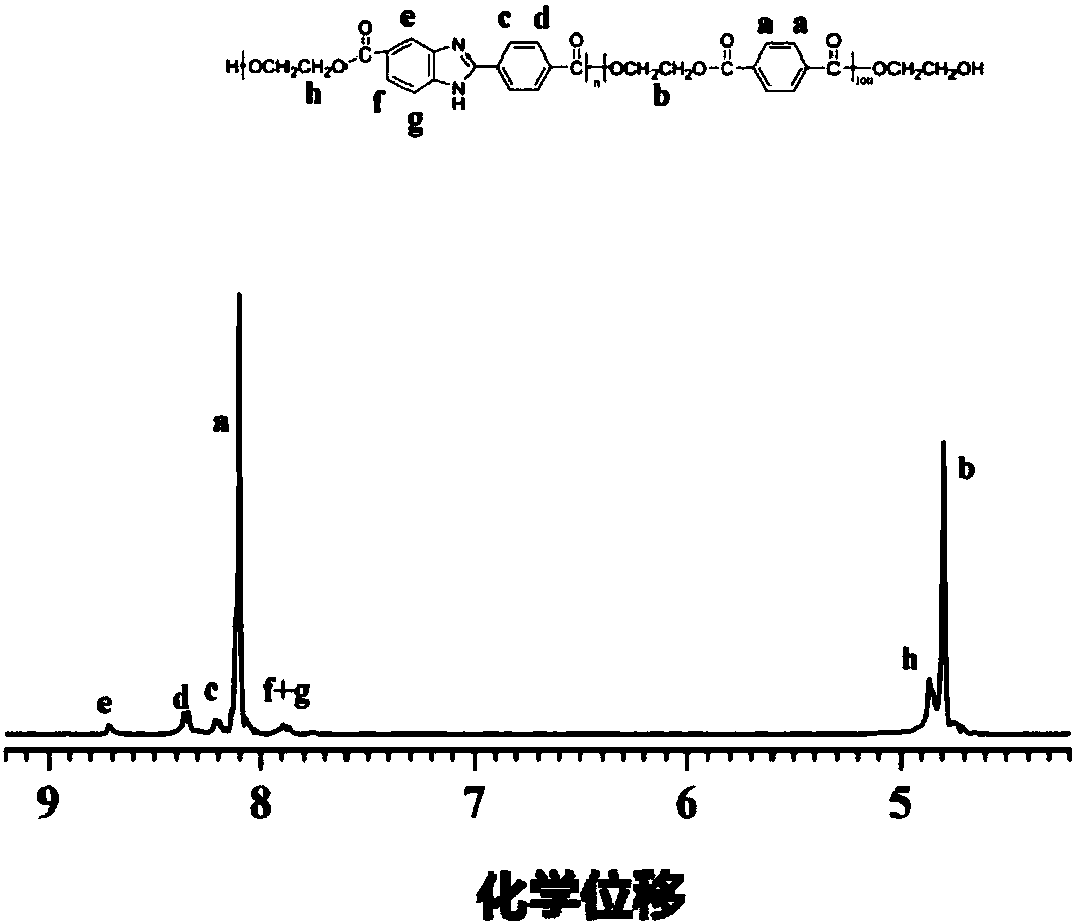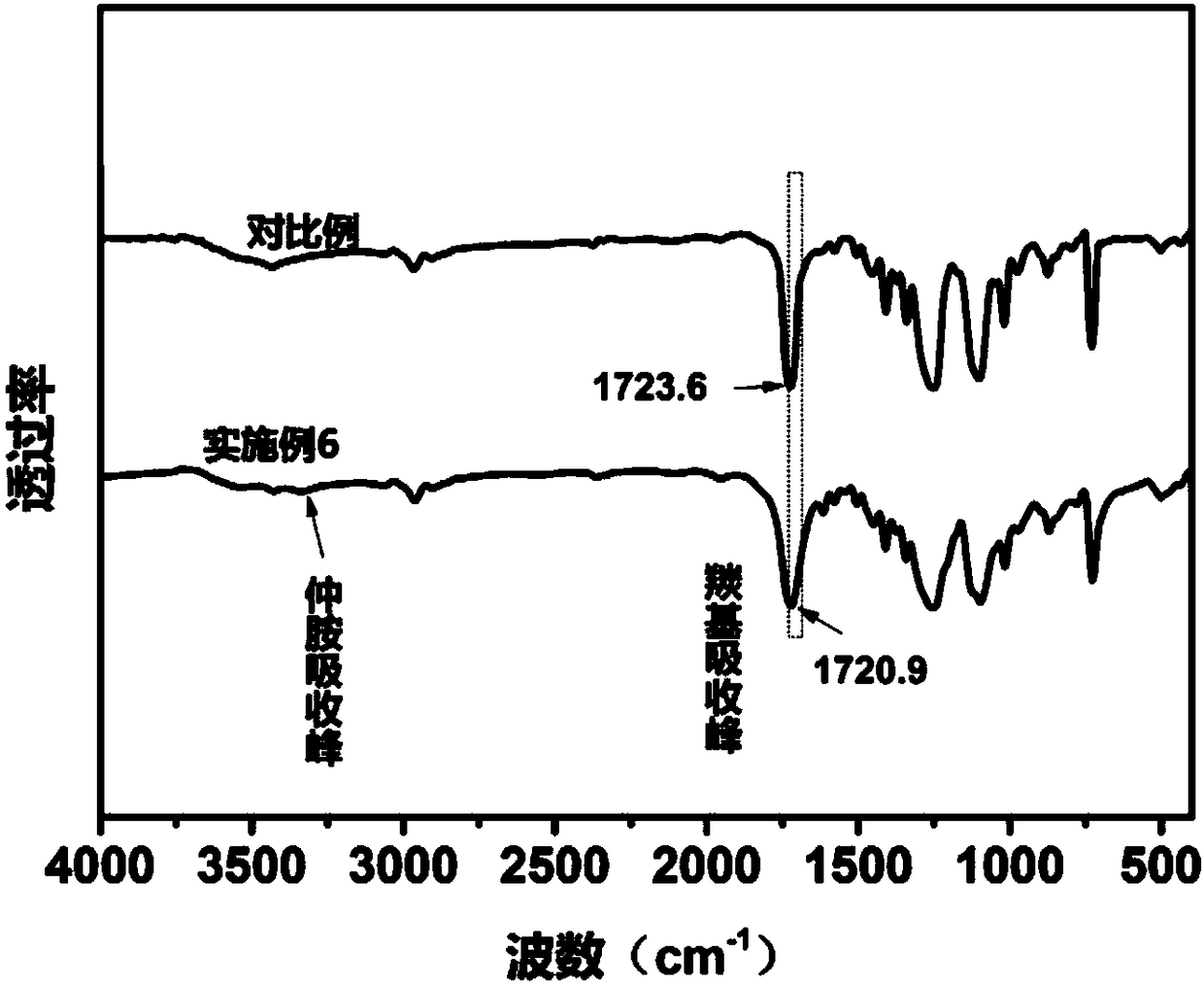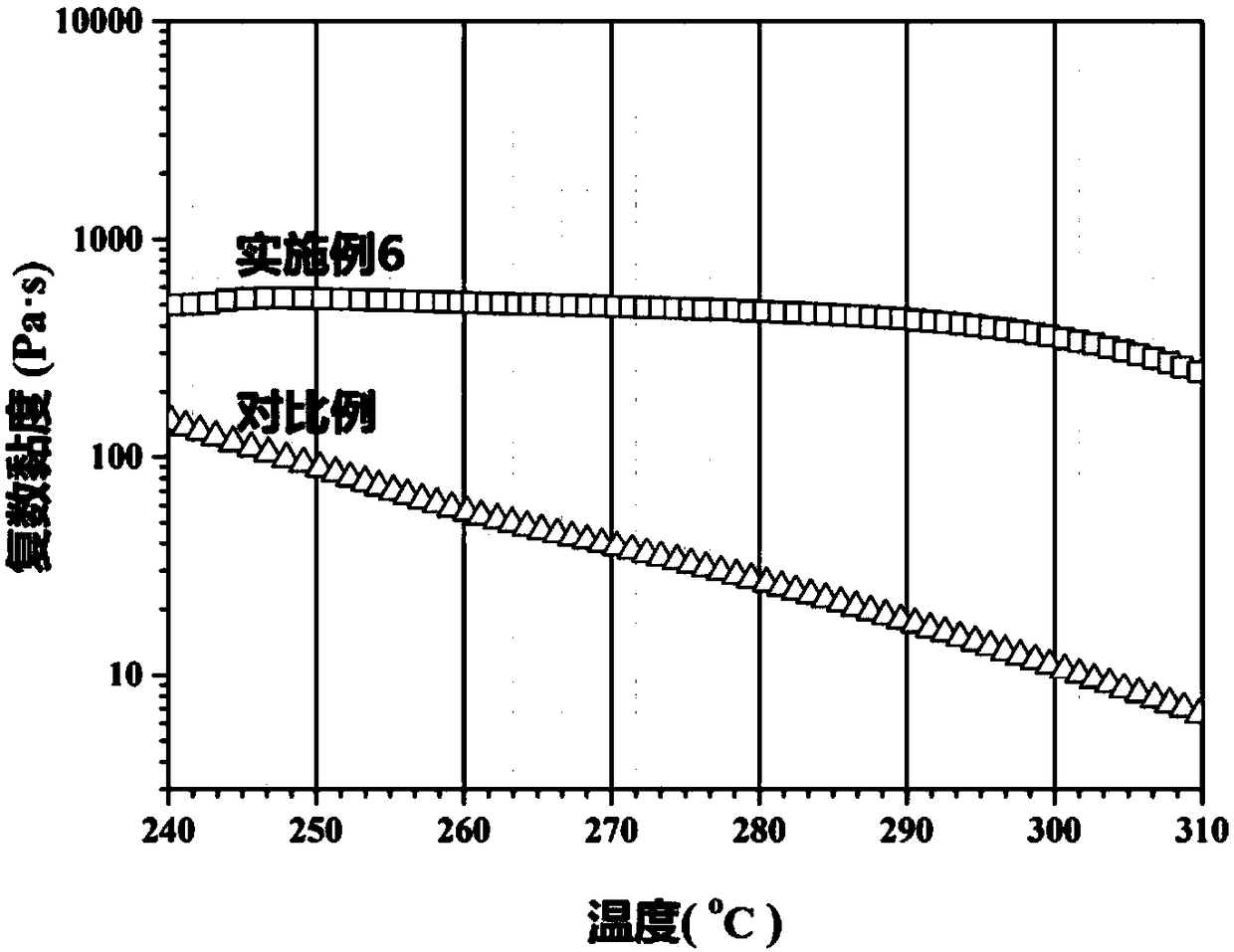Flame retardant anti-droplet copolyester based on benzimidazole structure, and preparation method thereof
A technology of benzimidazole and copolyester, which is applied in the field of flame-retardant and droplet-resistant copolyester and its preparation, can solve the problems of high cost, shortened polyester processing window, limited effect, etc., and achieves the improvement of glass transition temperature, Excellent anti-dripping, excellent flame retardant effect
- Summary
- Abstract
- Description
- Claims
- Application Information
AI Technical Summary
Problems solved by technology
Method used
Image
Examples
Embodiment 1
[0048] Add 415g of terephthalic acid, 220mL of ethylene glycol, 14.1g of 2-(4-carboxyphenyl)-1H-benzimidazole-5-carboxylic acid and 0.212g of tetrabutyl titanate into the reaction kettle, and fill with nitrogen Exclude the air in the kettle body, pressurize to 0.1MPa; raise the temperature to 240°C within 2 hours to start the esterification reaction, control the pressure in the kettle to 0.3-0.4MPa, after maintaining for 2 hours, the pressure begins to decrease, and the temperature gradually rises to 260 after 1.5 hours ℃, the pressure will be reduced to normal pressure, and the esterification reaction is over; thereafter, the low vacuum polycondensation reaction is carried out at 260-270℃ for 0.5h, and then the temperature is raised to 270℃ high vacuum (pressure<60Pa) polycondensation reaction is carried out for 1~3h, and the material is discharged. Water cooling is enough.
[0049] The intrinsic viscosity [η] of the copolyester is 1.36dL / g; the glass transition temperature i...
Embodiment 2
[0051] Add 415g of terephthalic acid, 220mL of ethylene glycol, 35.25g of 2-(4-carboxyphenyl)-1H-benzimidazole-5-carboxylic acid and 0.212g of tetrabutyl titanate into the reactor, and follow the implementation After the steps and conditions given in example 1 carried out esterification and polycondensation reaction, discharging.
[0052] The intrinsic viscosity [η] of the copolyester is 1.29dL / g; the glass transition temperature is 92°C, the limiting oxygen index is 28.0%, the vertical burning level is V-2 level, and the melting dripping phenomenon is obviously improved, twice Flame droplets are produced and ignite the absorbent cotton during ignition. There are only a few droplets during the test, and the sample can self-extinguish; but the peak heat release rate p-HRR in the cone calorimetry test is 465kW / m 2 , the total flue gas generation is 14.5m 2 .
Embodiment 3
[0054] Add 415g of terephthalic acid, 235mL of ethylene glycol, 70.5g of 2-(4-carboxyphenyl)-1H-benzimidazole-5-carboxylic acid and 0.212g of tetrabutyl titanate into the reactor, and follow the implementation After the steps and conditions given in example 1 carried out esterification and polycondensation reaction, discharging.
[0055] The intrinsic viscosity [η] of the copolyester is 1.26dL / g; the glass transition temperature is 96°C, the limiting oxygen index is 31.0%, the vertical combustion rating is V-2, and the melting dripping phenomenon is significantly improved, the first There is no droplet in the first ignition, and only one flaming droplet is produced in the second ignition, and the absorbent cotton is ignited; the peak heat release rate p-HRR in the cone calorimetry test is 355kW / m 2 , the total flue gas generation is 11.2m 2 .
PUM
| Property | Measurement | Unit |
|---|---|---|
| Intrinsic viscosity | aaaaa | aaaaa |
| Glass transition temperature | aaaaa | aaaaa |
| Intrinsic viscosity | aaaaa | aaaaa |
Abstract
Description
Claims
Application Information
 Login to View More
Login to View More - R&D
- Intellectual Property
- Life Sciences
- Materials
- Tech Scout
- Unparalleled Data Quality
- Higher Quality Content
- 60% Fewer Hallucinations
Browse by: Latest US Patents, China's latest patents, Technical Efficacy Thesaurus, Application Domain, Technology Topic, Popular Technical Reports.
© 2025 PatSnap. All rights reserved.Legal|Privacy policy|Modern Slavery Act Transparency Statement|Sitemap|About US| Contact US: help@patsnap.com



